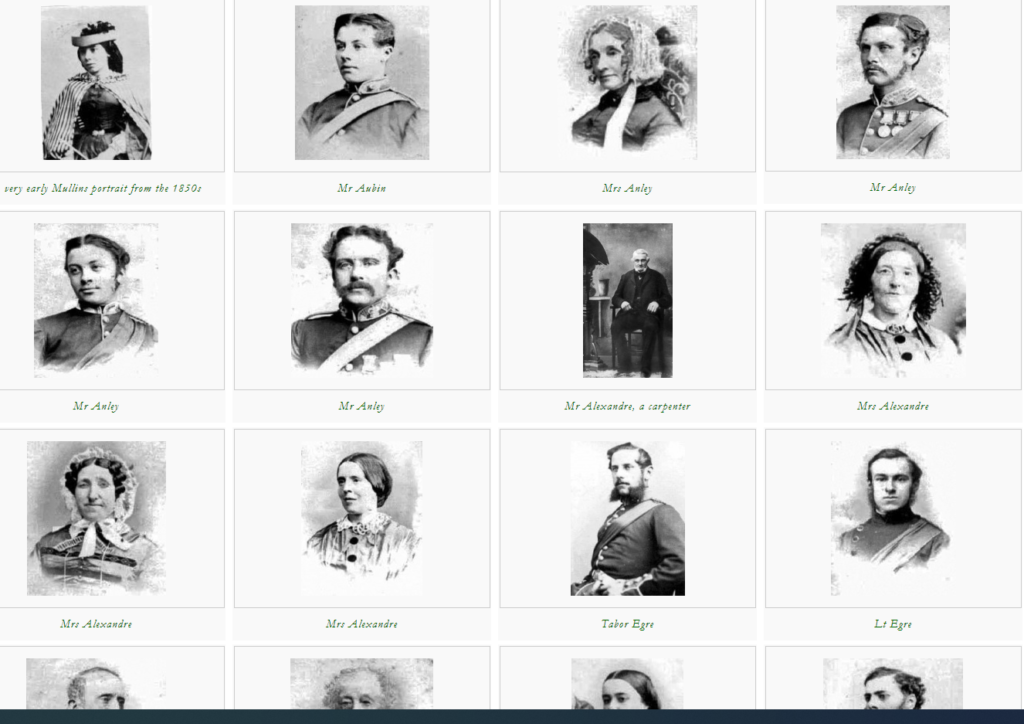Henry Mullins started working at 230 Regent Street in London in the 1840s and moved to Jersey in July 1848, setting up a studio known as the Royal Saloon, at 7 Royal Square.
Between 1850-73 Henry Mullins made over 9000 carte de visite portraits of Jersey’s ruling elite and wealthy upper classes.
It’s not known when he was deceased, however he spent over 20 years in Jersey and produced 4 albums with 2 and half thousand in each album, he also put the most important people at the at pof the albums eg, people in chareg of state cham,bers and piut togther a social higharchoty with it going own to fame nd i mportamnce in his albums.
Cartes de visite
His speciality was cartes de visite and the photographic archive of La Société contains a massive collection of these. Their on line archive contains 9600 images, but the majority of these are sets of up to 16 photographs taken at a single sitting. In those times even 10s 6d was a substantial sum to pay to have one’s photograph taken, and included among his subjects are many of the island’s affluent and influential people.
He was also popular with officers of the Royal Militia Island of Jersey, for whom it was very popular to have portraits taken, as well as of their wives and children, for the more senior and more affluent officers. The pictures of these officers show clearly the fashion for long hair, whiskers and beards in the mid-1800s. Indeed, so similar is their appearance and so stylised the portraits, it is very hard to detect much difference between a large number of officers of the same rank and social standing.
An advertisement in the Jersey Times of 5 June 1849 states that “Portraits are taken in groups of two or three, or the single figure, or bust, and of various sizes, even small enough for a ring, the charge for which is reduced to one half of that in London.
Here is some of his grids that he took.



ALBUMEN PRINT
Invented in 1850, and commonly used in the late nineteenth century, the albumen print is a type of photographic print made from paper coated with albumen (egg white).
The albumen print became popular because it produced a rich sharp image. The process involves coating a sheet of paper with albumen (egg white), making the paper’s surface glossy and smooth. It is then coated in a solution of silver nitrate. The albumen and the silver nitrate form light-sensitive silver salts on the paper. When a glass negative is placed directly on the paper and exposed to light, it forms an image on the paper.


Here are some more recent images of his.

This technique is called diamond cameo, licenced by Henry Mullins. Some cameo carvers are well known and signed cameos are valuable. Hardstone cameos are more highly valued than the softer Shell cameos.
Diamond Cameo photograph was registered by F.R. Window of London in 1864. Four small oval portraits were placed on a carte de visite in the shape of a diamond, each portrait being of the same person photographed in a different position.
Their on line archive contains 9600 images, but the majority of these are sets of up to 16 photographs taken at a single sitting.
JUXTAPOSITION
Juxtaposition is placing two images together to show contrast or similarities.

Here is some of my examples’ of headshots, as well as an examples of diamond cameo.
